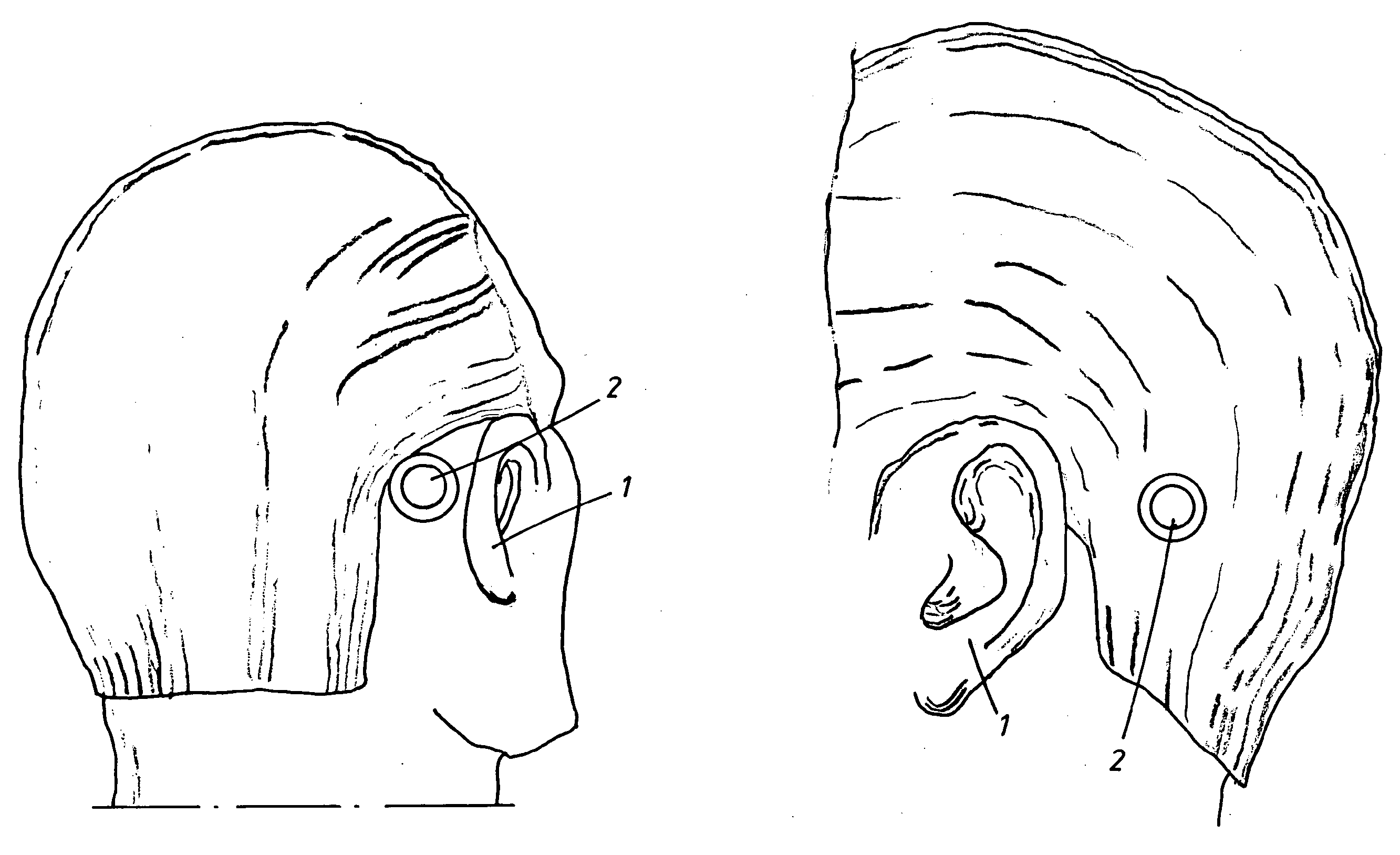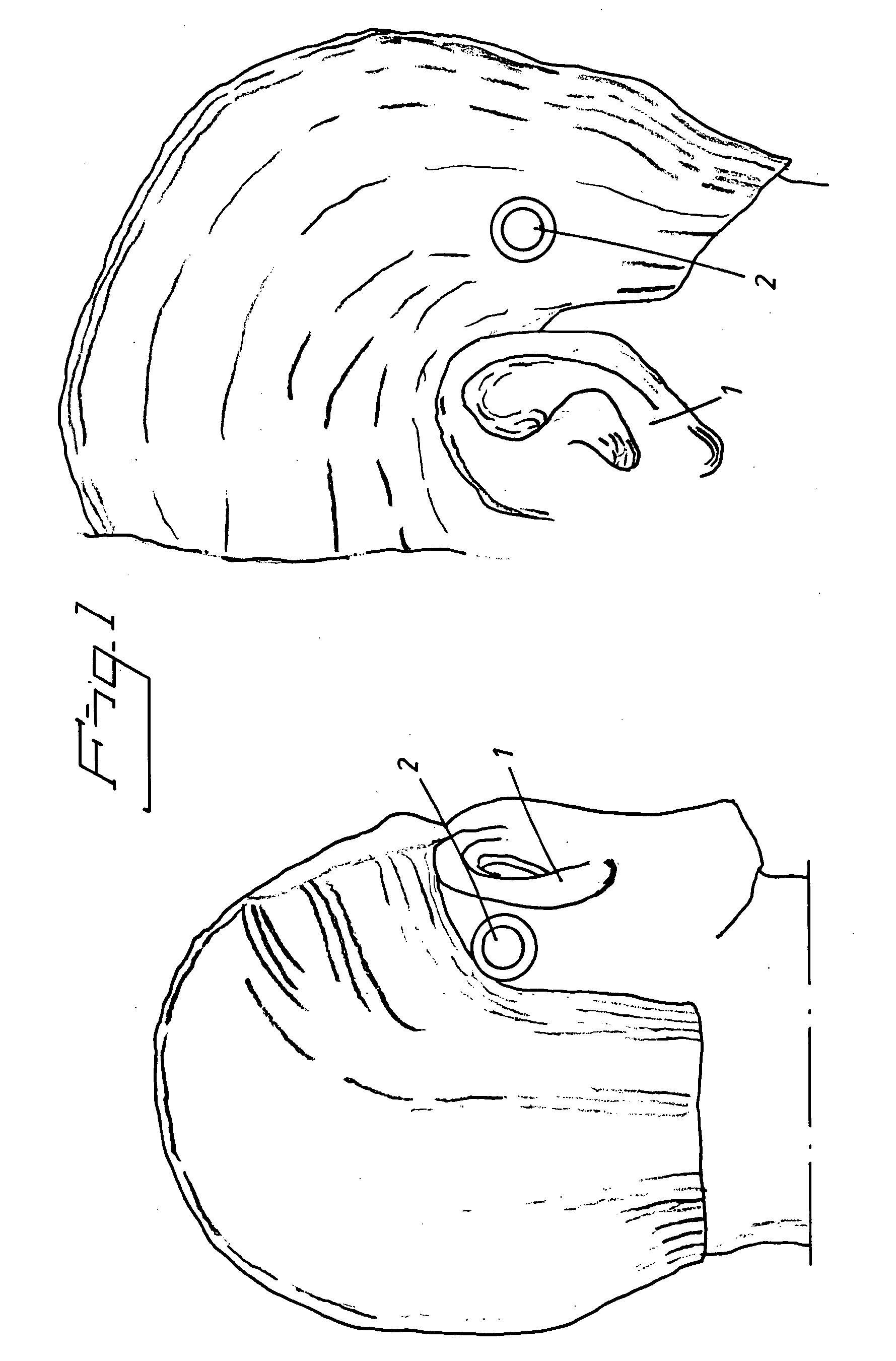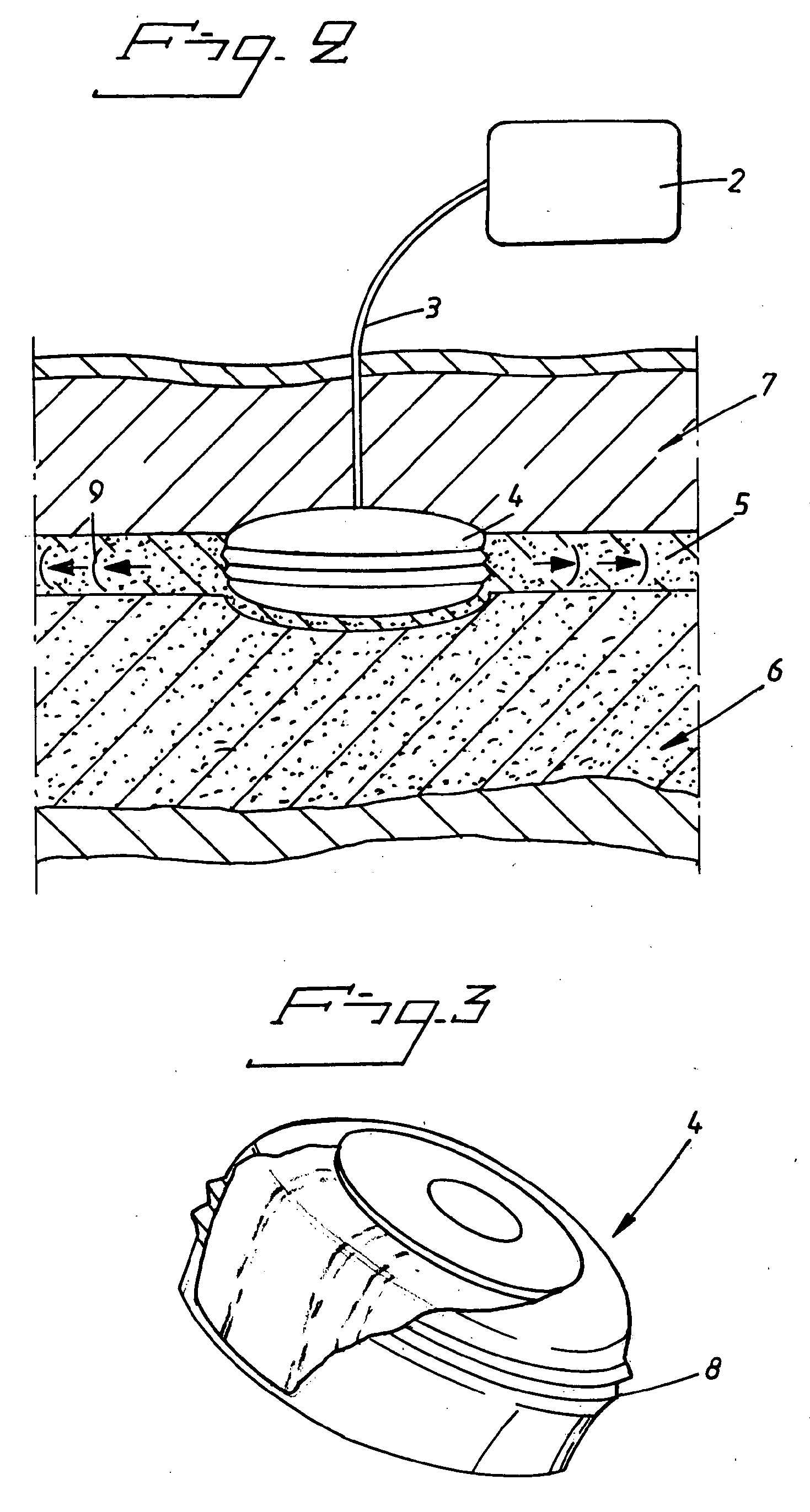Vibrator for bone conducting hearing devices
a bone conducting and hearing device technology, applied in the field of vibrations, can solve problems such as user discomfort, user eczema, user problems,
- Summary
- Abstract
- Description
- Claims
- Application Information
AI Technical Summary
Problems solved by technology
Method used
Image
Examples
Embodiment Construction
[0022]FIG. 1 shows schematically the general location of the bone conducting hearing aid device according to the invention. The hearing aid device is anchored in the skull bone, preferably in the mastoid bone, behind the external ear 1 of a person. The hearing aid device may comprise of two separate parts, an externally located part, schematically indicated by reference numeral 2 in the figure, and an implanted part. However, also the entire hearing aid device might be implanted in the mastoid bone behind the external ear 1. The sound is received by the external part 2 via a microphone and is then amplified and filtered in an external electronic circuitry which is power supplied by a battery. The amplified signal is transmitted by induction (transcutaneously) or by any other known means, such as a cord connection, through the skin to the implanted part (percutaneously). These parts are well known in the art and will not be described in any detail here.
[0023]To use inductive transmis...
PUM
 Login to View More
Login to View More Abstract
Description
Claims
Application Information
 Login to View More
Login to View More - R&D
- Intellectual Property
- Life Sciences
- Materials
- Tech Scout
- Unparalleled Data Quality
- Higher Quality Content
- 60% Fewer Hallucinations
Browse by: Latest US Patents, China's latest patents, Technical Efficacy Thesaurus, Application Domain, Technology Topic, Popular Technical Reports.
© 2025 PatSnap. All rights reserved.Legal|Privacy policy|Modern Slavery Act Transparency Statement|Sitemap|About US| Contact US: help@patsnap.com



